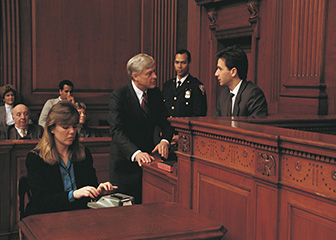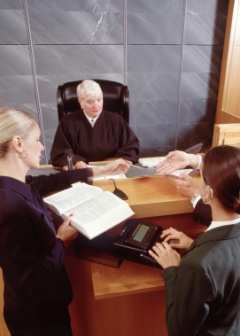
Court reporters provide an accurate description of court proceedings.
Court reporters attend legal proceedings and public speaking events and create word-for-word transcriptions. Some court reporters provide captioning for television and at public events.
Duties
Court reporters typically do the following:
- Attend events that require written transcripts
- Record spoken dialogue with specialized equipment, such as covered microphones
- Report gestures and actions
- Review notes for names of speakers and technical terminology
- Prepare transcripts for the record
- Edit transcripts for typographical errors
- Provide copies of transcripts and recordings to the courts, counsels, and parties involved
Court reporters create word-for-word transcripts of speeches, conversations, legal proceedings, meetings, and other events. They play a critical role in legal proceedings and other meetings where it is important to have a record of exactly what was said. They are responsible for producing a complete, accurate, and secure legal record.
Court reporters who work in courts also help judges and trial attorneys by organizing the official record and searching for information in it.
Other court reporters do not work in courtrooms. They also transcribe speech to writing as the speech occurs. However, they primarily serve people who cannot hear the spoken word by providing captions for television programs (called closed captioning). They may also transcribe speech for deaf and hard-of-hearing people in meetings.
Court reporters who work with deaf and hard-of-hearing people turn speech into writing. For information on workers who help deaf and hard-of-hearing people through sign language, cued speech, and other spoken or gestural means, see the profile on interpreters and translators.
Court reporters often specialize in a specific method of recording, such as using stenotype machines, steno masks (covered microphones), or digital recording.
Stenotype machine. Court reporters use stenotype machines to record dialogue as it is spoken. Stenotype machines work like keyboards but create words through key combinations rather than single characters, allowing court reporters to keep up with fast-moving dialogue. Court reporters who use stenotype machines are known as stenographers.
As with a regular keyboard, the symbols are recorded in a computer program. The program uses computer-assisted transcription (CAT) to translate the key combinations into the words and phrases they represent, creating readable text. The court reporter then reviews the text for accuracy and corrects spelling and grammar errors.
Steno mask. Court reporters who use steno masks speak directly into a covered microphone, recording dialogue and reporting gestures and actions. Because the microphone is covered, others cannot hear what the reporter is saying. The recording is converted by computerized voice-recognition software into a transcript that the court reporter reviews for accuracy, spelling, and grammar.
For both stenotype machine recording and steno mask recording, court reporters must create and maintain the online dictionary that the computer uses to transcribe the key presses or voice recordings into text. For example, they may put in the names of people involved in the court case or specific words that are used in that type of meeting.
Digital recording. Digital recording creates an audio, rather than a written, transcript. Court reporters who use digital recorders operate and monitor the recording equipment. They also take notes to identify the speakers and provide context. In some cases, the reporter uses the audio recording to create a written transcript.
Court reporters who work with deaf and hard-of-hearing people use a technique called Communication Access Real-Time Translation (CART). They go with their clients to events, doctor’s appointments, or wherever they are needed. These court reporters also caption high school and college classes and provide transcripts to students who are hard-of-hearing or learning English as a second language. They also sometimes work remotely because an Internet or phone connection allows them to hear and type without having to be in the room.






